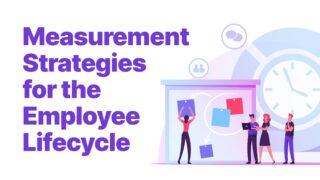The full content of this video is available to logged-in Members only. Already a member? Watch now
Normal 0 false false false EN-US X-NONE X-NONE /* Style Definitions */ table.MsoNormalTable {mso-style-name:”Table Normal”; mso-tstyle-rowband-size:0; mso-tstyle-colband-size:0; mso-style-noshow:yes; mso-style-priority:99; mso-style-parent:””; mso-padding-alt:0in 5.4pt 0in 5.4pt; mso-para-margin-top:0in; mso-para-margin-right:0in; mso-para-margin-bottom:8.0pt; mso-para-margin-left:0in; line-height:107%; mso-pagination:widow-orphan; font-size:11.0pt; font-family:”Calibri”,sans-serif; mso-ascii-font-family:Calibri; mso-ascii-theme-font:minor-latin; mso-hansi-font-family:Calibri; mso-hansi-theme-font:minor-latin; mso-bidi-font-family:”Times New Roman”; mso-bidi-theme-font:minor-bidi;}
Due to the economic burdens posed by the COVID-19 pandemic, many employers have been forced to reduce their workforce and announce furloughs and layoffs. Announcing these decisions to employees is never easy and could pose major challenges to your organization if not handled tactfully. It’s also critical that organization have a plan in place to help employees adjust when the time comes to return to physical workspaces and previous routines.
Discover key practices you should follow when communicating with your workforce on these sensitive topics.
Normal 0 false false false EN-US X-NONE X-NONE /* Style Definitions */ table.MsoNormalTable {mso-style-name:”Table Normal”; mso-tstyle-rowband-size:0; mso-tstyle-colband-size:0; mso-style-noshow:yes; mso-style-priority:99; mso-style-parent:””; mso-padding-alt:0in 5.4pt 0in 5.4pt; mso-para-margin-top:0in; mso-para-margin-right:0in; mso-para-margin-bottom:8.0pt; mso-para-margin-left:0in; line-height:107%; mso-pagination:widow-orphan; font-size:11.0pt; font-family:”Calibri”,sans-serif; mso-ascii-font-family:Calibri; mso-ascii-theme-font:minor-latin; mso-hansi-font-family:Calibri; mso-hansi-theme-font:minor-latin; mso-bidi-font-family:”Times New Roman”; mso-bidi-theme-font:minor-bidi;}
Learn how to:
- Craft clear, transparent and compassionate messaging regarding layoffs and furloughs
- Dispel rumors and backlash in response to staffing decisions
- Provide channels for employee feedback and respond in a clear and timely manner
- Protect morale and culture in the aftermath of layoffs and furloughs
- And more.

 Individuals
Individuals Teams
Teams



































